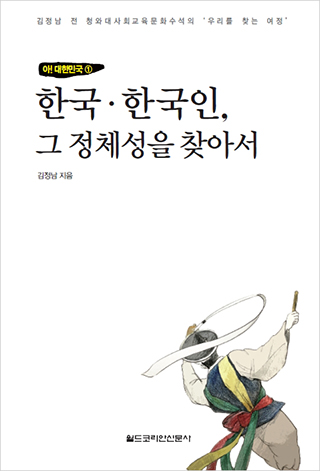By Jeongnam Kim
(Former Senior Presidential Secretary for Education·Culture·Society, World Korean News advisor)

The Temple Stay Program which was initiated on the occasion of 2002 Korea-Japan World Cup Games is now becoming one of the unique cultural events. At the time of its inauguration, 33 temples took part in the program, with less than 5,000 participants.
But in 2011, a total of 118 temples hosted this program with a total of 420,000 participants. Of the 420,000 participants, a total of 37,000 were foreigners. This program is now becoming one of the most important cultural items educating the foreigners about the Korean Buddhism and our traditional culture as well.
A research paper published by the Tourism Commission of the OECD in 2009, says that "the Temple Stay Program is making a big stride as a culture tourism worth representing the world, and it is the business on which a stress should be placed in order to strengthen the international competitiveness of the Korean tourism in the future."
It also designated this program as one of the five most successful tourism products in the whole world. Furthermore, the World Economic Forum (WEF) said that "due to the Temple Stay Program, the competitiveness and the national image of Korea are making an upswing."
The Temple Stay is a program under which people stay in the traditional Korean temples and experience the Korean culture. Most of the traditional Korean temples are located in the famous mountains with beautiful landscapes and clear water, and just a visit to those temples alone would be an excellent sightseeing.
For those people who have lost their hometown thanks to the industrialization of our country, the temple in the mountain of a thick forestry is as good as one's own home where one's mind can take rest. And for foreigners, this is an excellent opportunity to fully enjoy the beautiful landscapes of Korean mountains and rivers.
The sound of running water in the stream before the temple, the whistle of wind elbowing through the bamboo forests, the walkways covered with thick fallen leaves, and the light of stars shooting down against the dark expanse of the night skies, the sutra chanting in the depth of night, the meatless temple food not tinted with seasons, and the Zen meditation by the monks added to all these, the fall night's experience in the temple is something unique that cannot be compared to anything. You can leave the hustle and bustle of the world for a while and have time to look at yourself.
The Mihwang Temple of Hainam, Jeolla Namdo, now established as one of the representative temple stay sites, has a scroll hung in its Ung-jin Dang inscribed with a poem reading as following:
In the broad daylight, stars and the moon are seen; the Sun rises in the middle of night.
In the summer, you see ice and snow; in the winter, you see rainbows.
You hear with your eyes, you see with your nose and you speak with your ears.
In the world of Buddhsm, color is the very emptiness.
I cannot get a full grasp of what all these abstruse meanings of this poem, but the temple stay makes us feel near the truth of something deep. The temple stay is also specialized in such a say that it's not only a retreat for a few days but it is also a cultural movement of a sort that educates the tradition of Korea.
The "Let me Alone" concert of Geumsansa Temple is centered on music and lectures. Baikdam-sa Temple specialized in the 1008 Bows and cooking, whereas the Daiseung-sa Temple of Mun-gyeong provides a program for the experience of tea culture and celadon, and a ritual visit to the Bongjeong-am of Daichong-bong is a singular opportunity of exclusive experience available here. There is also a leisure oriented program as well as an English language learning program.
Observing the 10th anniversary of the initiation of this program, the Buddhist world, with Jogyejong at the front, is working on various projects to diversify the temple stay programs and strengthen them. In particular, efforts are exerted to find a solution to the problem of communication with foreign visitors with a program to hire cultural consultants to avail themselves on a permanent basis and so forth. The temple stay is one of the programs I would like to recommend for both Koreans and foreigners as well to experience at least once.


